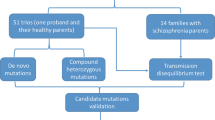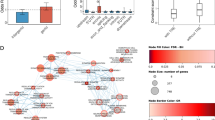Abstract
Chandy et al suggested that a novel human neuronal small conductance, calcium-activated potassium channel gene, KCNN3, might be a candidate for schizophrenia.1 The KCNN3 cDNA sequences contain two stretches of CAG trinucleotide repeats encoding two separate polyglutamine segments near the N-terminus of this channel protein. The second CAG repeat was found to be highly polymorphic in the Caucasian population from both Europe and USA. Upon comparing the allelic frequency distribution between schizophrenic patients and ethnically matched controls, a significant excess of longer CAG repeats in schizophrenic patients was observed. A similar result was obtained in a recent replication study by Bowen et al,2 performed in Caucasians from UK or Eire. These results suggest an association between the longer CAG repeat allele of the KCNN3 gene and schizophrenia susceptibility. To verify if similar results can be observed in the Chinese population, we carried out a case-control study to compare the allelic frequency distribution of the CAG repeat of the KCNN3 gene between 92 Chinese schizophrenic patients and 100 normal controls from Taiwan. No significant difference of the allelic frequency distribution of the second CAG repeats was detected between the two groups (Wilcoxon Rank Sum test, P = 0.664). In addition, no over-representation of CAG repeats longer than the mode (19 repeats) was found in the patients' group (Fisher's exact test, P = 0.739). Thus, our data do not support that the second polymorphic CAG repeat of the KCNN3 gene may have an association with schizophrenia in our population.
This is a preview of subscription content, access via your institution
Access options
Subscribe to this journal
Receive 12 print issues and online access
$259.00 per year
only $21.58 per issue
Buy this article
- Purchase on Springer Link
- Instant access to full article PDF
Prices may be subject to local taxes which are calculated during checkout
Similar content being viewed by others
Author information
Authors and Affiliations
Corresponding author
Rights and permissions
About this article
Cite this article
Tsai, MT., Shaw, CK., Hsiao, KJ. et al. Genetic association study of a polymorphic CAG repeats array of calcium-activated potassium channel (KCNN3) gene and schizophrenia among the Chinese population from Taiwan. Mol Psychiatry 4, 271–273 (1999). https://doi.org/10.1038/sj.mp.4000482
Received:
Revised:
Accepted:
Published:
Issue Date:
DOI: https://doi.org/10.1038/sj.mp.4000482
Keywords
This article is cited by
-
SK3 Channel Overexpression in Mice Causes Hippocampal Shrinkage Associated with Cognitive Impairments
Molecular Neurobiology (2017)
-
Molecular and cellular basis of small- and intermediate-conductance, calcium-activated potassium channel function in the brain
Cellular and Molecular Life Sciences (2008)
-
Electrophysiological characterization of the SK channel blockers methyl-laudanosine and methyl-noscapine in cell lines and rat brain slices
British Journal of Pharmacology (2004)
-
Novel truncated isoform of SK3 potassium channel is a potent dominant-negative regulator of SK currents: implications in schizophrenia
Molecular Psychiatry (2003)
-
Genetic analyses of schizophrenia
Current Psychiatry Reports (2000)



